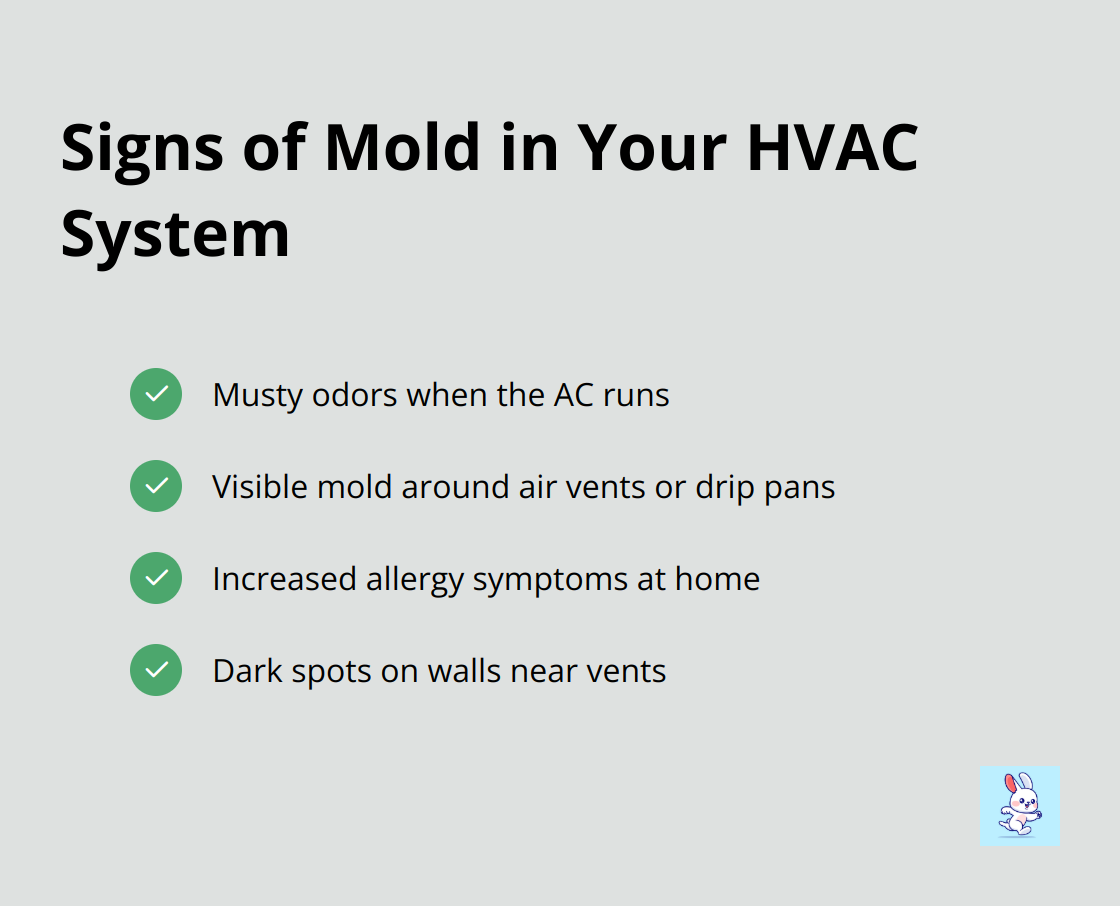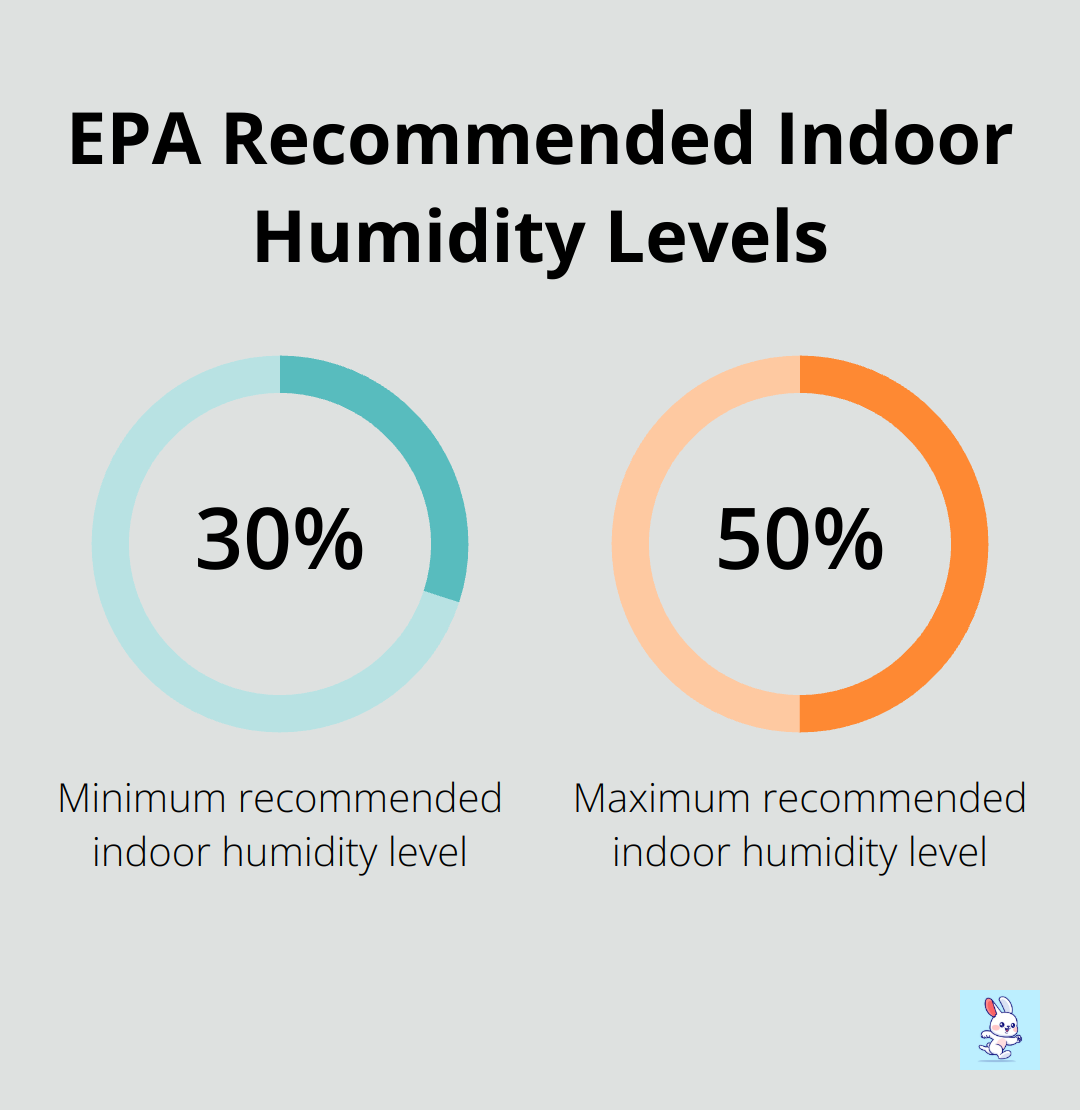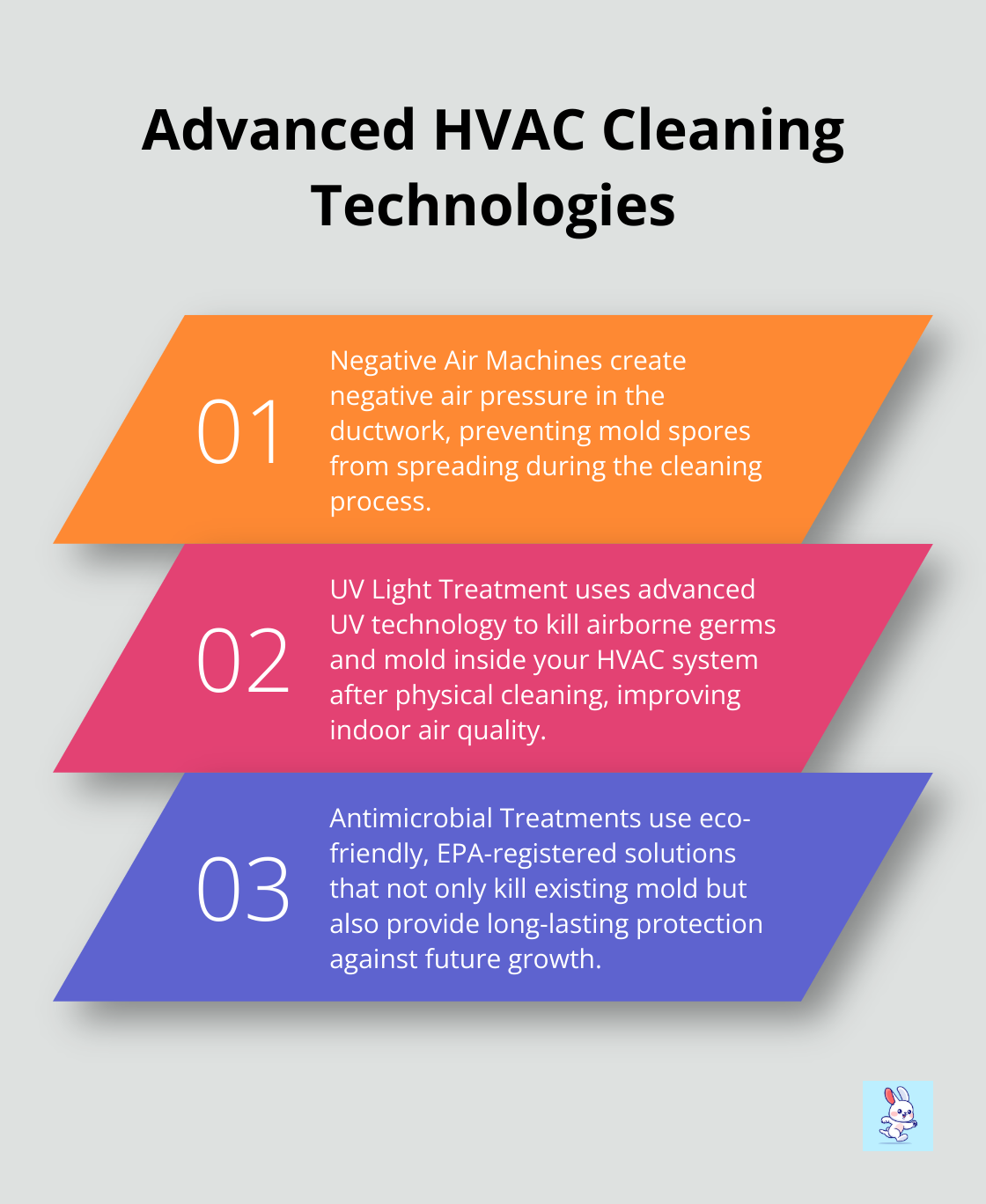Mold in HVAC systems is a serious issue for Henderson homeowners. It can lead to health problems and damage your heating and cooling equipment.
At Cleaning Rabbit, we’ve seen firsthand the impact of unchecked mold growth in air conditioning units. This guide will help you understand, prevent, and tackle HVAC mold issues effectively.
What Causes Mold in HVAC Systems?
Moisture: The Primary Culprit
Moisture stands as the number one cause of mold growth in HVAC systems. Henderson’s climate, with its fluctuating humidity, often leads to condensation inside air ducts and other HVAC components. This creates an ideal environment for mold spores to thrive. The Environmental Protection Agency (EPA) provides guidance for homeowners and renters on how to clean up residential mold problems and how to prevent mold growth.
Poor Maintenance Fuels Mold Growth
Neglect of regular HVAC maintenance significantly contributes to mold problems. Dirty air filters, clogged drain pans, and dusty ductwork provide organic matter for mold to feed on. The National Air Duct Cleaners Association (NADCA) recommends cleaning air ducts every 3 to 5 years to prevent such issues.
Health Impacts of HVAC Mold
The presence of mold in your HVAC system can lead to various health issues. The Centers for Disease Control and Prevention (CDC) reports that severe reactions, such as fever or shortness of breath, may occur among workers exposed to large amounts of molds in occupational settings.
Spotting Mold in Your HVAC System
Early identification of mold is essential. Look out for these signs:
- Musty odors when the AC runs
- Visible mold around air vents or drip pans
- Increased allergy symptoms at home
- Dark spots on walls near vents

If you notice any of these signs, it’s time to take action. While some minor mold issues can be addressed with DIY methods, extensive mold growth requires professional intervention. Specialized equipment (such as HEPA-filtered vacuums) can thoroughly clean and sanitize HVAC systems, ensuring your home’s air stays clean and healthy.
Prevention: The Key to Mold-Free HVAC Systems
Now that we understand the causes and signs of mold in HVAC systems, let’s explore effective prevention strategies. Proper maintenance and humidity control play crucial roles in keeping your HVAC system mold-free. In the next section, we’ll discuss practical steps you can take to prevent mold growth and maintain a healthy indoor environment.
How to Prevent HVAC Mold Growth
Regular HVAC System Maintenance
Prevention of mold growth in your HVAC system starts with consistent maintenance. Schedule professional HVAC inspections twice a year. During these check-ups, technicians will clean or replace air filters, clear drain lines, and inspect ductwork for moisture or mold signs.
Regular HVAC system maintenance can help reduce strain on system components, minimizing wear and tear over time. This proactive approach can help prevent costly breakdowns and extend the life of your HVAC system.
Between professional visits, replace your air filters every 30 to 90 days (depending on your system and household needs). This simple task can significantly reduce the organic matter that mold feeds on.
Don’t neglect your outdoor unit. Keep it clear of debris and vegetation, allowing at least two feet of clearance around it. This improves airflow and reduces moisture buildup.
Indoor Humidity Control
Mold thrives in humid environments, so maintain optimal indoor humidity. The EPA recommends keeping indoor humidity between 30% and 50%. Use a hygrometer to monitor your home’s humidity levels.

If your home is consistently humid, consider installing a whole-house dehumidifier. These systems work with your HVAC to remove excess moisture from the air, creating an inhospitable environment for mold.
In bathrooms and kitchens, use exhaust fans during and after activities that generate moisture. Run these fans for at least 30 minutes after showers or cooking to effectively remove humid air.
Home Ventilation Improvement
Proper ventilation prevents mold growth. Ensure that all areas of your home, especially basements and attics, have adequate airflow. Use fans to circulate air in stagnant areas.
If you have a crawl space, consider encapsulating it. This process involves sealing the area with a vapor barrier, which significantly reduces moisture levels and mold risk.
For homes with central air conditioning, keep the fan setting on “Auto” rather than “On.” This prevents moisture from being blown back into your home when the cooling cycle ends.
Professional Assistance
While these strategies are effective, they’re not foolproof. If you suspect mold in your HVAC system, call a professional. Companies with HEPA-filtered equipment ensure thorough cleaning and long-lasting results.
Now that we’ve covered prevention strategies, let’s move on to effective mold removal techniques for those instances where prevention wasn’t enough. The next section will guide you through both DIY methods for minor issues and when to call in the professionals for more severe mold problems.
Tackling HVAC Mold Head-On
DIY Mold Removal for Small Problems
For small, visible mold patches on accessible surfaces, you can often handle the cleanup yourself. Mix equal parts water and white vinegar in a spray bottle. Spray the solution on the affected area, let it sit for an hour, then scrub with a soft brush. Wipe with a clean, damp cloth to finish.
Clean air vent covers with the vinegar solution after removal. Use a vacuum with a HEPA filter to remove loose mold spores from the vents. Always wear protective gear (gloves and a mask) during this process.
When to Call the Professionals
Extensive mold growth demands professional attention. Call experts if you notice widespread mold, persistent musty odors, or if family members experience unexplained respiratory issues.
Professional HVAC cleaners possess the tools and expertise to safely and thoroughly remove mold from your system. They can access hard-to-reach areas and use specialized equipment to ensure complete mold removal.
Advanced Cleaning Technologies
Professional HVAC cleaning services employ advanced technologies for effective mold removal. These include:

The Importance of Prompt Action
Address mold in your HVAC system promptly to maintain a healthy home environment. Quick action against mold will improve your indoor air quality and protect your family’s health.
Choosing the Right Service Provider
Select a reputable HVAC cleaning service with experience in mold removal. Look for companies that use HEPA-filtered equipment, as this ensures no mold spores are left behind. If you’re in the Las Vegas or Henderson area, consider CleaningRabbit, a family-owned service with over 20 years of expertise in HVAC sanitation and air quality assessments.
Final Thoughts
A mold-free HVAC system creates a healthy home environment in Henderson. Regular maintenance prevents HVAC mold growth. Change air filters, schedule professional inspections, and keep outdoor units clear of debris to stop mold from thriving.
Prompt action matters when mold appears. Minor issues often respond to DIY methods, but extensive growth requires professional intervention. Advanced cleaning technologies (such as HEPA-filtered equipment) ensure thorough mold removal and long-lasting protection.
CleaningRabbit offers specialized HVAC mold prevention solutions for Henderson homeowners. Their team uses cutting-edge equipment to keep homes healthy and comfortable. A clean HVAC system improves indoor air quality, reduces health risks, and potentially lowers energy bills.

